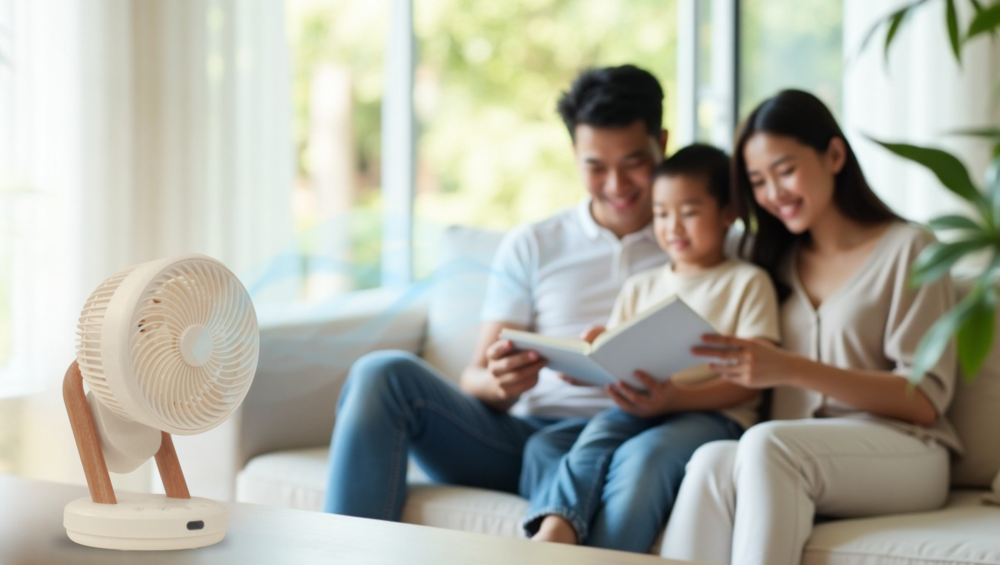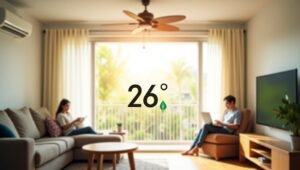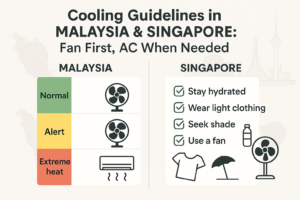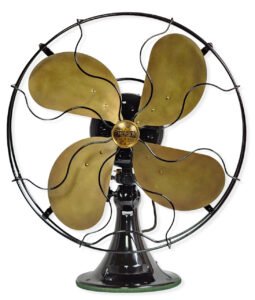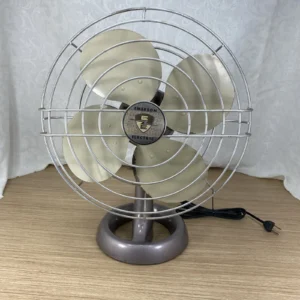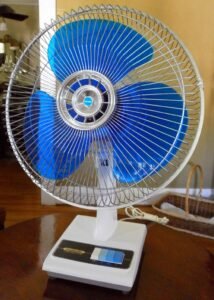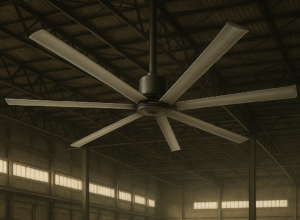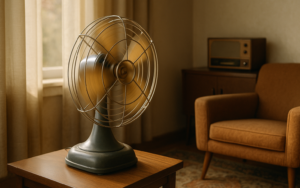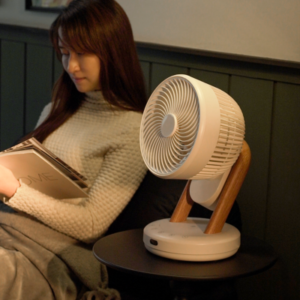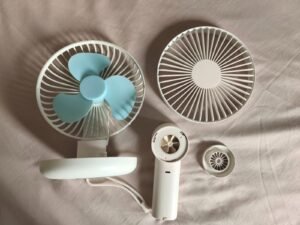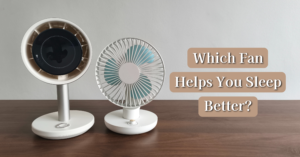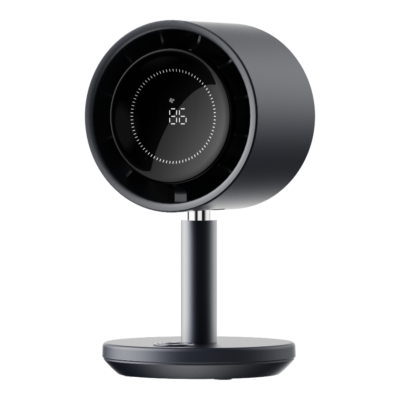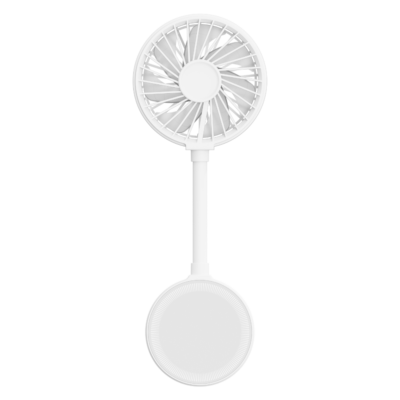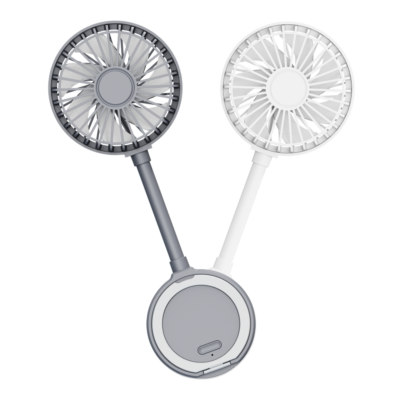In tropical countries like Singapore and Malaysia, staying cool is a daily challenge. With temperatures consistently hovering between 23°C and 33°C and humidity levels often exceeding 80%, air conditioning has become the default solution for comfort. But as electricity bills soar and climate concerns grow, it’s time to rethink how we cool our spaces (and our bodies).
A growing number of experts now advocate for a fan-first strategy, using fans as the primary cooling method until indoor temperatures reach around 27°C. This isn’t just a cost-cutting tip; it’s a science-backed approach that balances comfort, energy efficiency, and environmental responsibility.
Here’s why this strategy works, and why it might just be the cooling mindset shift we need in the tropics:
Why Fans Work (Even in High Humidity)
Let’s start with the basics: fans don’t lower room temperature. Instead, they help your body cool itself more efficiently through two main processes; evaporation and convection.
In humid climates like ours, sweat doesn’t evaporate easily because the air is already saturated with moisture. This is why you might feel sticky and uncomfortable even when you’re not overheating. What a fan does is create airflow that sweeps away the humid layer near your skin, allowing sweat to evaporate more effectively. That’s how it helps you cool down, even if the air around you stays warm.
Fans also promote convection cooling by disrupting the layer of warm air that surrounds the body. As the fan circulates air, it replaces this insulating layer with cooler ambient air, enhancing the sensation of comfort. In fact, studies show that fan use can make a space feel up to 4°C cooler.
Older guidelines once cautioned against fan use in extreme heat, but more recent findings show that fans remain safe and effective up to 38°C–39°C, especially when humidity is high. In Southeast Asia, where extreme dry heat is rare, fans are a practical and reliable tool for daily comfort.
Energy Efficiency: A Clear Win for Fans
When it comes to electricity consumption, the numbers are hard to ignore. A central air conditioner can consume up to 3,500 watts per hour, while a typical ceiling or pedestal fan uses only 15 to 100 watts. That’s just 1% to 5% of the energy, translating to substantial savings over time.
In Malaysia, where electricity is charged in tiers, fans help households stay within the lower, more affordable brackets. In Singapore, with regulated tariffs, fans similarly help keep monthly bills manageable for energy-conscious households.
And beyond the wallet, there’s the bigger picture: fans drastically reduce greenhouse gas emissions compared to air conditioners. They also relieve pressure on power grids, which is especially crucial during peak heat periods.
Comfort Without Compromise
You might be wondering; can fans really keep you comfortable in this heat?
The answer is yes—up to a point. Research shows that most people can tolerate indoor temperatures up to 27°C when using fans. This makes it entirely feasible to delay turning on the air conditioner, or set it to a higher temperature (say, 26°C to 28°C) while using a fan for air movement. This hybrid method keeps your space comfortable without burning through electricity.
Studies in Malaysia have shown this approach works well in homes, offices, and even religious spaces. In one study of Malaysian mosques, comfort levels were found to be optimal between 26°C and 27.8°C using natural ventilation and fans alone.
Similarly, in Singapore, pairing ceiling fans with higher air-conditioning set points in commercial buildings resulted in up to 30% energy savings, without sacrificing thermal comfort.
The Case for a Hybrid Cooling Strategy
There will be days when fans aren’t enough, especially during heatwaves or in poorly ventilated rooms. That’s where a hybrid strategy shines: use fans as the first line of defense, and bring in air conditioning only when absolutely necessary.
Fans help distribute cool air more evenly, eliminating hot spots and allowing your AC to run at a lower intensity. You get the same level of comfort with less energy use. It’s a smarter way to cool.
Some tips for effective hybrid cooling:
- Set your ceiling fan to spin counter-clockwise during hot days where it pushes cooler air down.
- Use portable fans to direct airflow where you need it most.
- On cooler evenings, use window or exhaust fans to pull in fresh outdoor air.
Most importantly, listen to your body. Children, the elderly, and those with health conditions may need more aggressive cooling. But for the average healthy adult, fans provide more than enough relief until about 27°C.
Aligning with National Heat Guidelines
The fan-first approach also aligns with government heat health advice in both countries.
The fan-first approach also aligns with government heat health advice in both countries.
Malaysia uses a tiered heat alert system. During “Normal” and “Alert” levels (below 37°C), fans are recommended for staying cool. Only during extreme heatwaves (above 40°C) does air conditioning become essential.
Singapore doesn’t have a formal heat alert system, but the National Environment Agency and Energy Efficiency Programme Office have long advocated for sustainable cooling habits. One notable campaign encourages households and businesses to set air conditioners at 25°C or higher, promoting energy conservation while maintaining comfort. In such settings, pairing fans with higher AC setpoints significantly reduces energy usage without compromising how cool you feel.
Again, fans play a central role in this strategy, helping maintain airflow, reducing hot spots, and making elevated AC temperatures feel just as comfortable.
Let’s Rethink How We Stay Cool
Living in the tropics doesn’t mean we need to rely on air conditioning 24/7. By adopting a fan-first approach and saving air conditioning for when it’s truly needed, we can reduce our energy bills, lower our environmental impact, and still stay comfortable.
I believe it’s time we normalize fans as the primary cooling method, not as a backup. With smart placement, good air circulation, and an understanding of how our bodies respond to heat, fans can keep us cool and healthy well into the high twenties.
In a warming world, small choices like this matter more than ever. So the next time you reach for the remote, consider the fan first. It’s the cooler, smarter choice for Singapore, Malaysia, and beyond.
Elevate Everyday Comfort, The Smarter Way
True comfort isn’t just about temperature; it’s about how your space feels. A thoughtfully designed fan can transform your environment by improving air circulation, reducing stagnation, and making your daily routines feel lighter, fresher, and more breathable.
The JustZan 360º Air Circulator Fan does exactly that. Its wide-angle oscillation, quiet performance, and elegant build bring together form and function, perfect for those who value both practicality and style.
Start making smarter, more sustainable choices at home. Get yours today for RM299 / $98—available for a limited time only.
